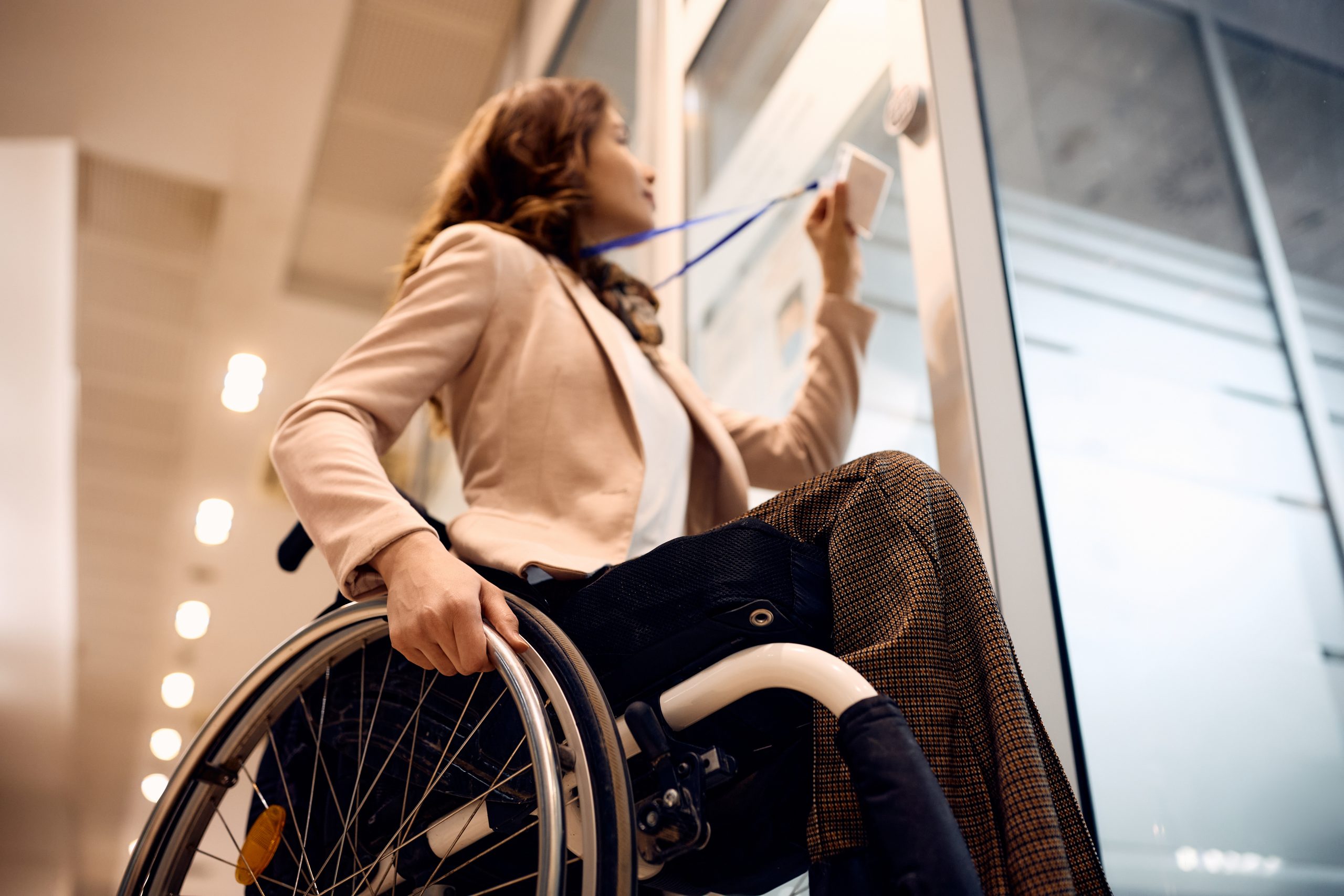The short answer is yes! Everyone loves a nice vacation, whether it involves sunbathing, getting away from it all, or visiting a big city. Everyone has a right to choose leisure, regardless of the kind. What then do you do if some visitors require particular accommodations to appreciate your vacation rental?
The travel industry is thankfully beginning to recognize the growing demand for more accessible travel options. There is still a ton of work to be done, though.
12.8% of Americans live with a handicap, according to data from Cornell University’s DisabilityStatistics.org. That totals more than 42 million people who might have travel-related problems.
Everyone should be able to access your short-term rental to benefit the visitors’ experience, their safety, and everything! If you think your property needs to be better right now, take a look and see what you could adjust or modify to make everyone who stays there feel welcome.
What characteristics distinguish a vacation property that is accessible to people with disabilities?
It could be challenging to determine what needs to be altered, even if you’re on board with making the changes. Begin with a walk-through home examination and carefully consider what might be restricting. Are any tight passageways, confined areas, or parts of the house that stairs can only reach? If you want to improve accessibility in your house, this is a wonderful place to start.
Below, we’ve included several essential accessibility considerations, but remember that one size does not fit all. A metropolitan loft or mountain cabin will need different accommodations than a ranch-style, one-story home.
The doorway
If an entrance is not accessible to people with disabilities, the visitor experience could suffer. If it’s difficult to enter and exit your house, you’re putting your visitors at risk of a bad experience right away. You have a variety of options for fixing this. Here are a few concepts:
Place a ramp at the entrance. If adding a ramp at the main entrance is not feasible, let visitors know where it is located before their visit and construct one at a different entrance.
Any divots or dips at the doorway that can be challenging to access should be removed.
Reduce the peephole’s height or add another. It’s vital to consider the needs of visitors using wheelchairs when someone rings the doorbell.
Parking for people with disabilities
In your correspondence before the guests arrive, be sure to make it clear if parking is available on the property. Describe any alternate choices, drop-off locations, or transportation plans.
If you do provide parking, consider expanding the area to make it more accessible for those with disabilities. A ramp or lift should be able to deploy in a handicapped parking space. This area should also have a side aisle that is prominently identified. Once your parking satisfies these requirements, you must have the area painted to make it obvious that it is designated for visitors with disabilities.
Dimensions of doors and hallways
You must ensure that all rooms are as accessible as feasible to maximize the quality of a visitor’s stay. Wheelchairs typically measure 25 inches broad. You should make your doorframe at least 35 inches wider to provide room for this.
Ensure that all door knobs are accessible from a lower location and are simple to locate and use.
Bathroom
You may change your bathroom in several ways to make it more accessible. Bathroom accessibility for all guests will ensure a good stay because this is a key aspect of the home. Here are some ideas to think about:
- Sinks with wheels
- wheelchair-accessible showers or walk-in tubs with benches
- Grab bars and handholds
- Anti-slip surfaces
- Toilets with easy transfers
- convenient outlets
Once more, the extent of your space’s alterations will depend on the accessibility measures you’ve already put in place.
Kitchen
The kitchen serves as the center of the house for many of us. It’s a place to socialize over meals, plan for the day at the breakfast bar, or relax. You are responsible for ensuring that all guests can share and appreciate this. What is the height of your fridge handles, tabletops, counters, and appliances? Are there sharp edges or unnoticed obstacles that can be hazardous for those using wheelchairs or vision impairments? Think about the equipment and supplies that should be accessible to everyone.
What benefits may accessible vacation rentals offer?
While there are always up-front costs involved in remodeling, fixing, and enhancing a property, these costs are more than justified given the value they will provide. Making investments in accessibility is no different. You’ll benefit much from changes you make to your vacation rental property to make it more accommodating.
Srin Madipalli, product manager for in-home accessibility at Airbnb, explains why it makes sense for owners of vacation rentals to make accommodations for people with disabilities.
A market exists for it.
According to statistics, more than one billion individuals, or over 15% of the global population, are disabled in some way.
IBCCES Board Chairman Myron Pincomb said, “Everyone deserves to have an excellent experience when they travel and to have peace of mind that they will be welcomed and accommodated, regardless of their needs.
You might tap into a sizable market of vacationers with disabilities, whether you renovate your vacation rental to be more accommodating for wheelchair users or make it clear on your website that service animals are welcome on your property.
Obtain an advantage over the opposition
There are countless vacation rentals worldwide, but shockingly few provide accessible rooms and a toilet suited for elderly and disabled guests.
Because it was so difficult to find accessible accommodations online that I could rely on, Madipalli founded the website Accomable, which Airbnb later bought in 2017.
In light of this, if you could modify one or two of your rental rooms, you could provide something your competitors can’t, giving you a new selling point.
Accessible spaces can be fashionable.
Anyone who has ever used an accessible restroom in an airport or shopping center will be aware that accommodations for the disabled can appear cold and impersonal. However, things don’t have to be this way!
Many landlords of furnished apartments already provide elegant, roomy wet rooms that a wheelchair can enter. Special items like bathroom “grip rails” can be attached and removed when necessary. This implies that you can just take the equipment out of use if one guest is disabled but the next is not.
In addition, various alternative lodging options, such as eco-lodges and glamping yurts, are already available by their very nature. Additionally, they may be incredibly trendy, contemporary, and comfortable.
Of course, not everyone can do it. Though you could be pleasantly surprised by how simple it is to modify your rental, welcome a disabled tourist, and fill your rooms if you have step-free access to your main entrance, at least one accessible bedroom and toilet, as well as wide enough entrances.
It’s a fantastic chance to include assistive technology.
In addition to cutting-edge amenities like automated check-in and smart home technologies, property owners can take other steps to draw in this group.
For example, we’ve seen places in the Peak District offering Boma 7 off-road wheelchairs, which let you leave the pavement and explore the craggy dales. We’ve seen log homes with accessible hot tubs and track hoists that are cleverly incorporated. The author continues that even canal vessels with special modifications for up to three wheelchair users have been spotted.
The very fact that these cutting-edge house extensions exist demonstrates how seriously the lodging sector needs to take accessible travel. You can ensure visitors with disabilities have the best possible holiday by providing these amenities in your house.
How to make your vacation home available on the listing
Being able to say that your home is a welcoming and secure location for disabled travelers is something to be proud of! It’s time to let your guests know if you’ve made your home accessible. Every OTA (online travel agency) communicates accessibility information to customers differently. You can learn how to include your holiday home on these websites as an accessible accommodation.
Airbnb
For listings with accessibility features, this platform provides 21 additional criteria. Entering the house, moving around, using common spaces, and using the bathroom are a few of the categories. Inform visitors of these amenities if your property has them. These accessibility features are located in the same location where you add your amenities and accommodations.
Vrbo
This significant OTA offers a Top 50 ranking for the top vacation rentals that are wheelchair accessible in each state. Although it’s difficult to get on, it’s a list with excellent visibility for your property. You must arrange your property appropriately if you want to be considered. The accessibility options on Vrbo are a little more ambiguous because you can simply mark your vacation rental as “wheelchair accessible.” You can add more information about the kind of accessibility under the “suitability” and “notes” category, respectively.
Booking.com
Booking has created a fantastic array of options to demonstrate your property’s reachability. The types of improvements done and where in the house they were made can be specified.
Your web page
Regarding your website for vacation rentals, the world is your oyster! The benefit of having your page is that you may edit it to highlight the things you think are most significant. Put reviews highlighting how adaptable your vacation property is at the top of the page or include a virtual tour button with a picture of the enlarged door frames and ramp entry.
Follow the lead of the other OTAs and include accessibility in the list of features and amenities, add your flair by creating a dedicated tab for accessibility, or use any other method you see fit to illustrate this.
Key conclusions
According to Alexa Nota, vice president of VRM Intel, “there are many opportunities for property managers to appeal to this underserved market, such as incorporating braille, installing strobing fire alarms for the hearing-impaired, and having someone on staff available to assist the families of guests with Alzheimer’s.”
Fortunately, Lodgable includes features and tools that make finding these lodgings simpler.









